$5.5M Revenue Forecast: Carnival's 3D Customization Tool
How we transformed a cruise line's retail strategy by creating a mobile-first eCommerce experience that merged Shopify with interactive 3D design—generating $250K in the first quarter.
Expanding Beyond Onboard Sales
Carnival's retail department for onboard shops and merchandising wanted to upgrade their business and go digital in an effort to enlarge their customer base beyond the onboard consumer. They contacted our department to create a fully digital eCommerce experience for the customers so they could purchase Carnival merchandise before and after cruising.
Within the eCommerce strategy, Carnival wanted to leverage Etsy's cruising apparel market. They aimed to attract Etsy's customers and create a 100% digital experience where their consumers would be able to create their own fully customizable cruise vacay apparel with a touch of Carnival FUN.
A $50M Opportunity Limited by Physical Constraints
Carnival's merchandise business was exclusively tied to onboard purchases, missing significant revenue opportunities before and after cruises. The rise of cruise culture on platforms like Etsy proved there was massive untapped demand for customizable vacation apparel.
Business Objectives
- Launch MVP with $500K budget to validate product-market fit within 6 months
- Target $5.5M annual gross revenue from the customization tool alone
- Expand customer base beyond onboard consumers by creating a fully digital purchase path
- Compete with Etsy's cruising apparel market by offering 100% customizable products with Carnival's brand identity
Mobile-First Mandate
70% of Carnival.com traffic comes from mobile devices. Any solution that wasn't mobile-optimized would fail to reach our primary audience. This meant building a 3D customization tool that worked seamlessly on smartphones—a technical challenge most competitors hadn't solved.
Understanding Users Through Data
Using their goals and objectives, we started a series of discovery interviews and created a Component Prioritization Workshop where we established the product needs through:
- Stakeholder interviews
- Primary audience research
- Competitive analysis
- Materials review
- Third-party research analysis
- Technology assessment
Persona Development
We leveraged the Carnival.com audience and onboard customers to help us gain a deep understanding of our target audience. We then created persona profiles to more accurately identify with the users we were designing for. We broke down the different components that make up our persona experiences such as: archetypes, activities, interactions, experience and principles.
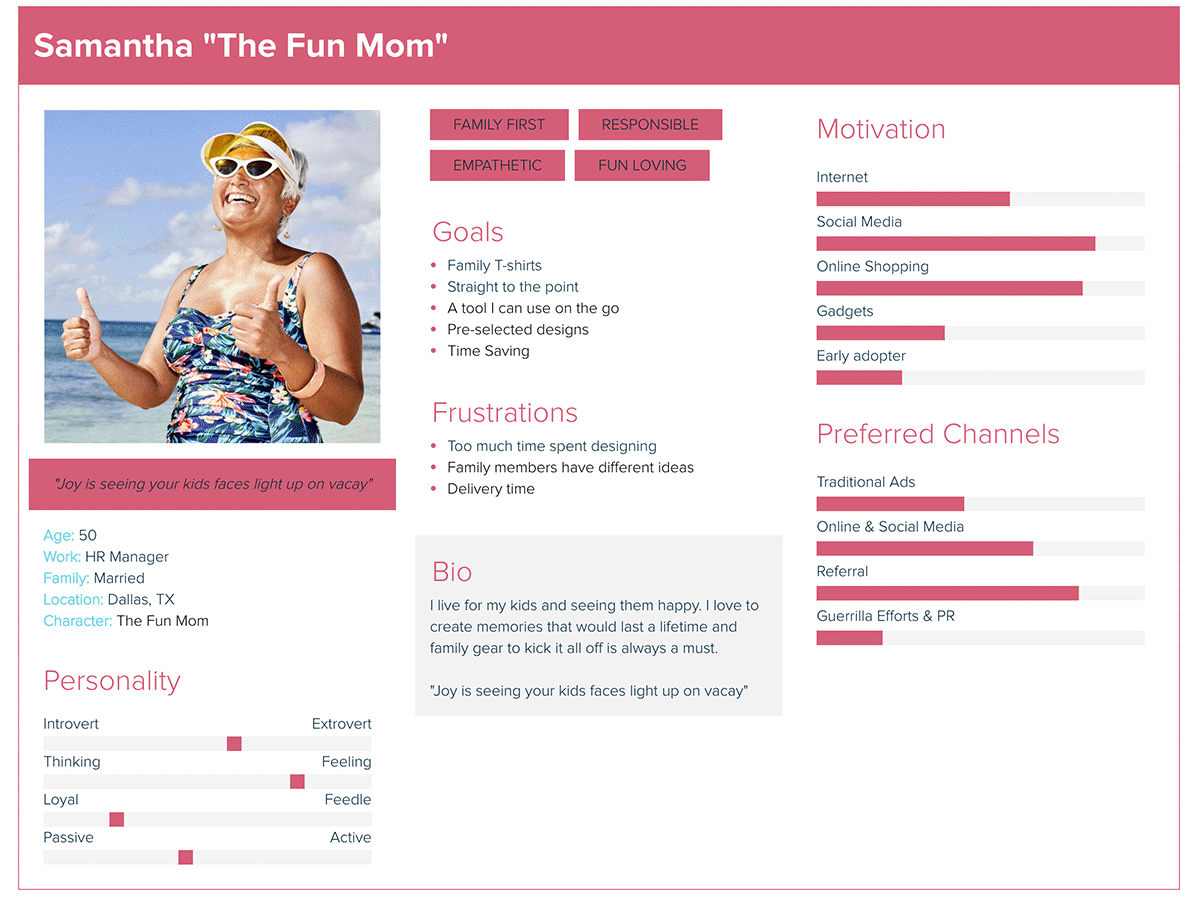
User Journey Mapping
Following the personas with the creation of a solid Customer Journey, we were now ready to strategize and set up a plan for a successful digital product for our target audiences.
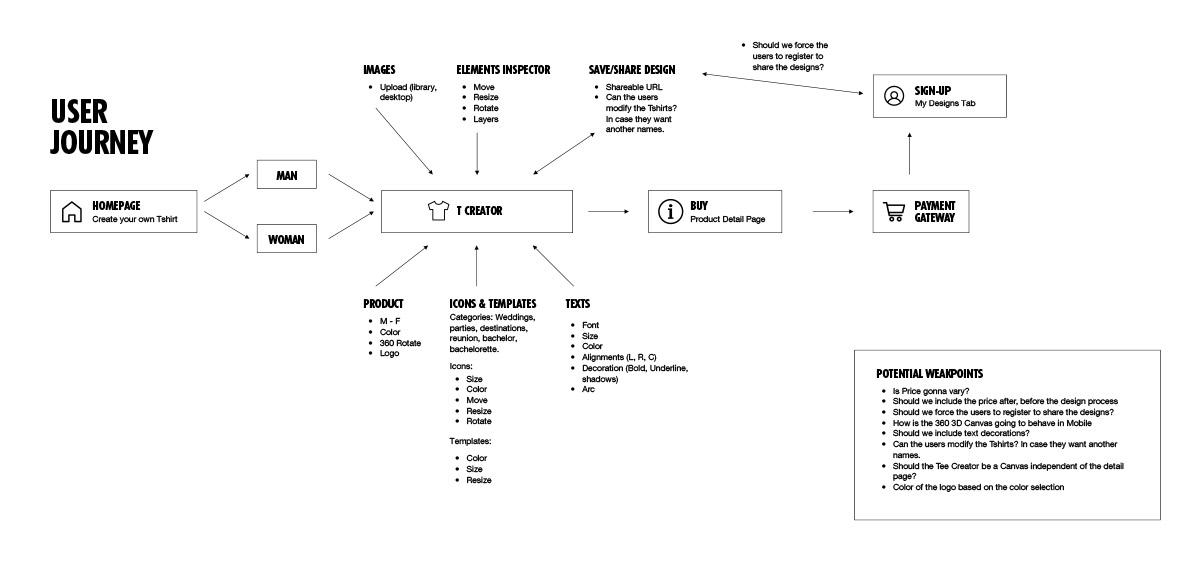
Customer Journey Analysis
We mapped the complete customer experience from discovery to purchase, identifying opportunities for engagement and conversion at each stage of the journey.
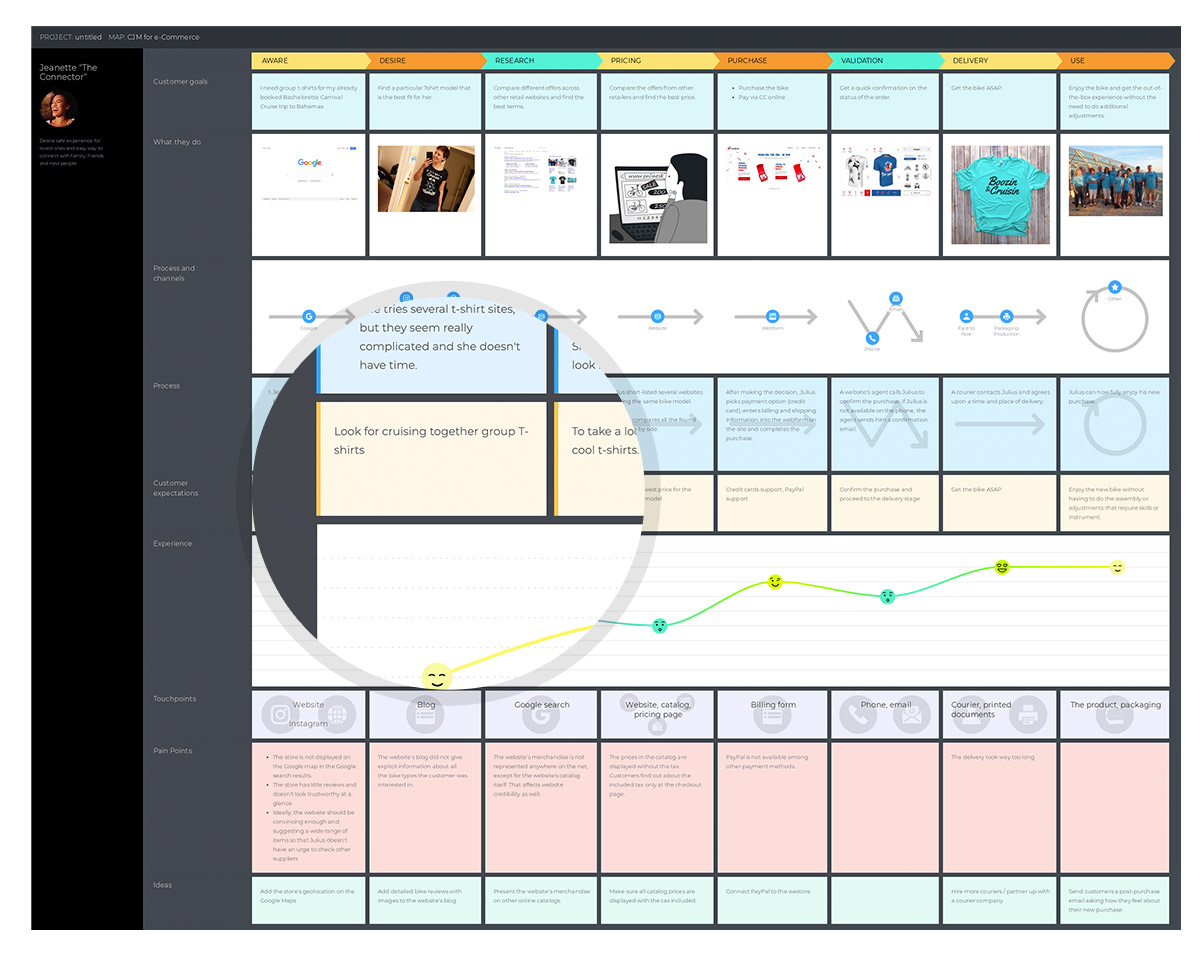
Building the Foundation for Success
We strategized and planned by identifying these key points to lead our design process:
- Overall vision and strategy
- Connections plan
- Establish a framework
- KPI definition
- Project planning and road mapping
From Wireframes to High-Fidelity Product
We kicked off our process by creating wireframes for both parts of the product: the customization tool and the actual eCommerce site. The eCommerce was created entirely with a custom-made template in Shopify because we were working on an MVP to see the right performance of the site before launch.
Lo-Fi Prototypes & Workflow
Initial wireframes mapped out the complete user flow and interactions. We tested early prototypes with users to validate our approach before moving to high-fidelity designs.

3D Customization Tool
For the retail customization tool, we collaborated with an external vendor that accommodated our needs and worked with us to create a 3D Three.js canvas with 3D t-shirts and other clothing models which were 100% customizable. The user was able to fully move, add, rotate texts, select from a library of preset templates and images to be placed on the T-shirt 3D canvas.
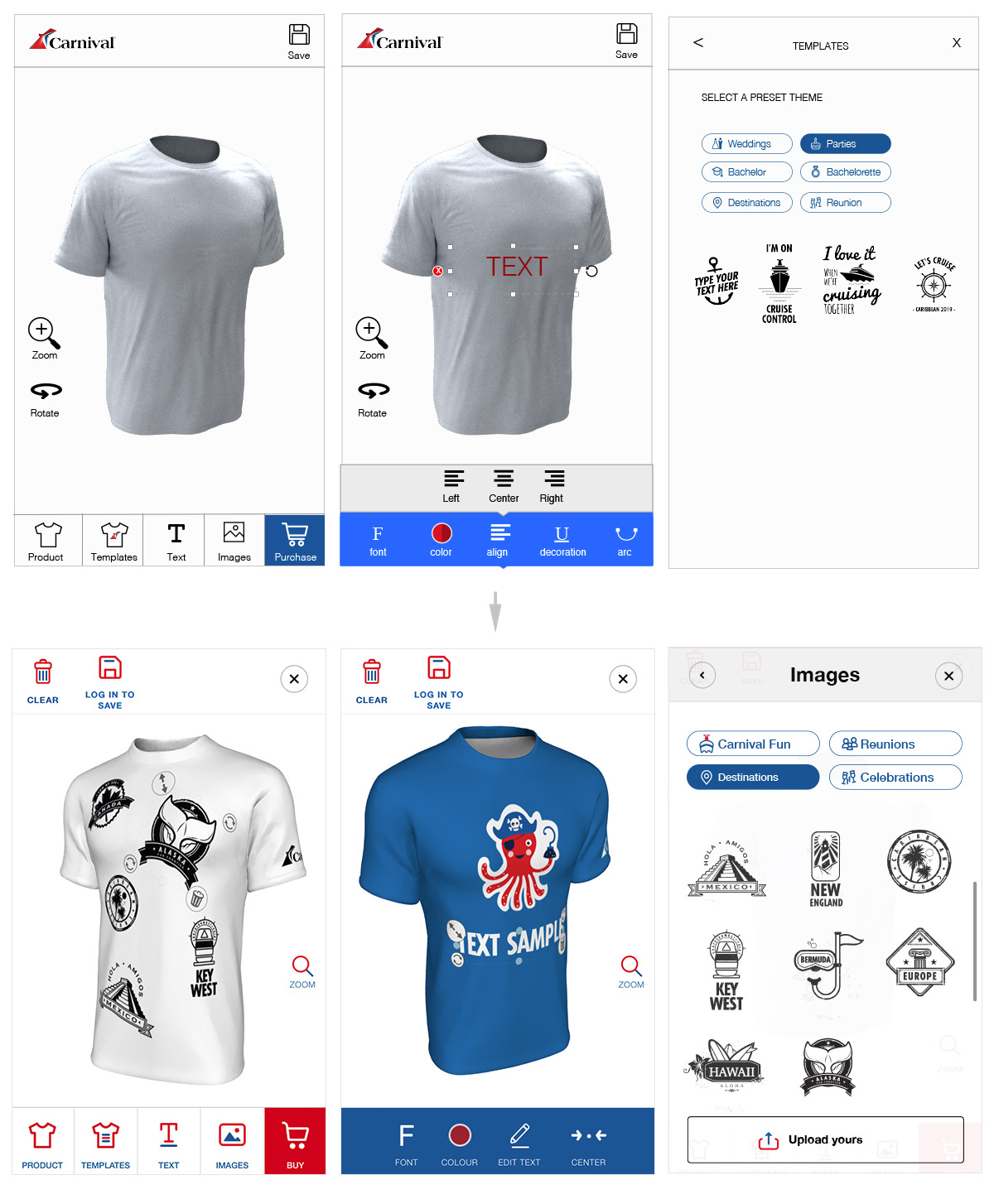
Design System Creation
Our next step was the creation and implementation part where we created a design system and Look & Feel based on the Carnival.com experience using Sketch. Then we tested the Low-Fi prototypes with different users. Once we had an agreement, we started with the development process.

Mobile-First 3D Experience: Solving Complex Challenges
Knowing our mobile traffic was the highest among devices, our product was 100% oriented to mobile. Here are a few challenges we encountered while creating for mobile first:
Challenge: Merging Both Experiences on Mobile
The Shopify eCommerce design was designed using a fun look and feel that was able to work together seamlessly with the clothing customization tool. The user was able to navigate back and forth between the "design lab" and Shopify ecommerce site easily without realizing they have left the page.
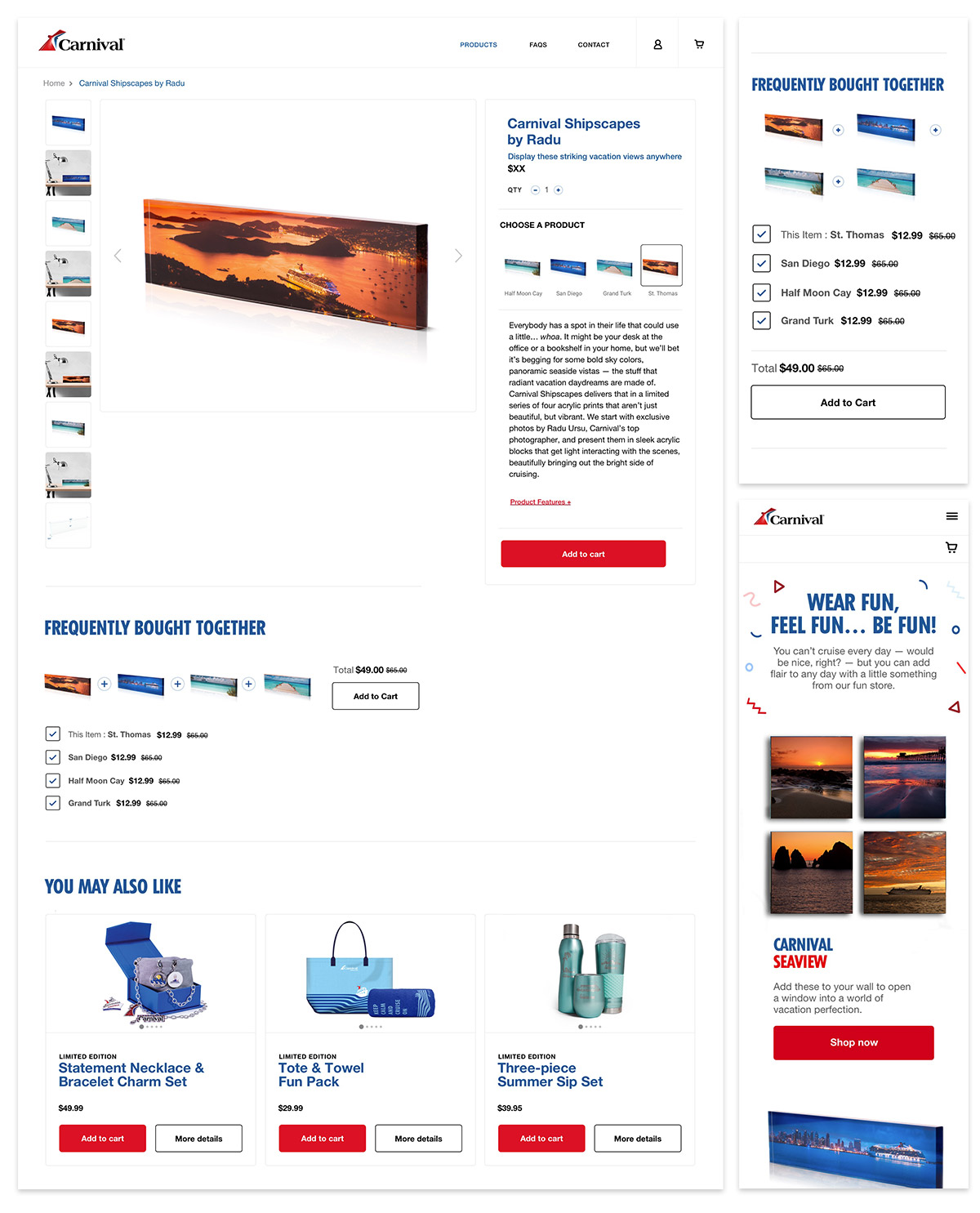
Challenge: Simplicity
We wanted the user to have absolute freedom, but we also wanted to have limited design options where the user could select a preset template – not movable or fixed, lockup and modify the text using simple form fields. The results were pretty cool.
Challenge: Touch of a Finger
In an effort to keep things simple, we kept everything in 5 tabs and avoided using an abundance of options. We had to add sub-menus over main menus as a solve for the mobile experience where space was more limited, but the experience was fluid and easy to navigate as a result.
Desktop vs Mobile Experience
We optimized both desktop and mobile experiences to ensure seamless interaction across all devices, with special attention to mobile gestures and touch interactions.

Proving Product-Market Fit in 90 Days
The MVP launch in May 2019 validated the business case within the first quarter, exceeding initial projections and establishing a new revenue stream for Carnival's digital future.
Business Impact
Generated in Q1 pilot (May - July 2019), exceeding initial projections by 18% and validating product-market fit within first 90 days
Revenue Forecast
Forecasted annual gross revenue from customization tool alone, positioning Carnival to capture share of $50M+ cruising apparel market
ROI
Projected return on $500K initial investment, proving viability for future digital retail expansion beyond MVP
Design Efficiency
Reduction in design-to-development handoff time via design system, enabling faster iteration and future scalability
Mobile Success
Of Q1 transactions completed on mobile devices, validating our mobile-first strategy. Conversion rates matched desktop despite 3D complexity.
Launch Timeline
From discovery to May 2019 launch—on time and on budget. Agile sprints with daily standups kept cross-functional teams aligned.
Ready to Transform Your Digital Experience?
Let's discuss how strategic UX and product design can drive measurable business results.